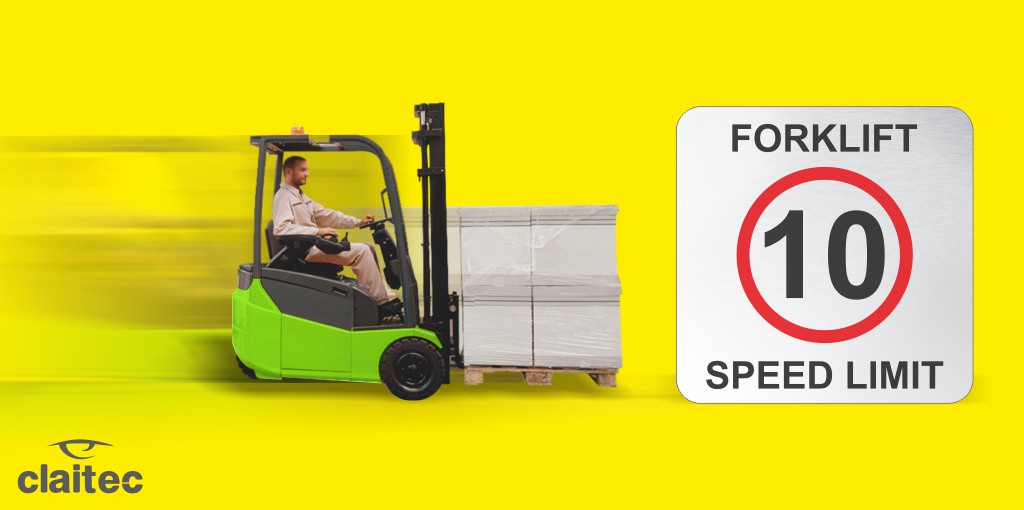One of the questions we most frequently get asked by our customers pertains to the maximum speed forklifts should be circulating to prevent work accidents. This is a natural concern given that the daily work dynamics increasingly involves the coexistence of operators with several of these heavy vehicles in the same space. This forces us to establish parameters and general operating regulations to improve occupational safety and prevent workplace accidents.
There is no regulation establishing a specific speed range, although many safety managers rely on the technical notes published by INSHT institutes in each country. In general, it is considered acceptable to maintain a speed circulation of 20 km/h in open outdoor spaces, and a limit of 10 km/h in indoor spaces where pedestrians coexist regularly.
At Claitec we have also developed a range of solutions that keep forklift operators safe at all times.
Solutions like the Pedestrian Alert System (PAS), a tool that alerts drivers when it detects a person at adjustable distances from 1 to 6.5 meters. It is a unique system capable of differentiating people from objects, and even detecting operators behind walls or shelves!
The PAS System minimises the number of accidents, reduces the risk of being run over, and generates safer and more efficient work environments. It can be easily complemented with other safety systems.
Another option is the LSA Solution, an electronic safety device which limits the circulation speed of forklifts. It is specially designed to complement the safety tools of the vehicle and to reduce its speed in areas where there are operators on foot. This solution is a great ally to help you reduce accidents and collisions between vehicles, often caused by speeding.
Once the LSA Solution is installed, its operation is remarkably simple, and it does not require any action from the operator. The forklift that is equipped with this system reacts when entering an area in which its use was determined, and it activates a signal that forces it to adapt to the established limit, which can be selected as either “slow” or “fast”.
Beyond the above, our safety technician – a professional with extensive experience in the matter and in constant contact with factories and warehouses -, recommends analysing each specific case to adopt the most appropriate safety measures in each company.
In addition, there are some factors to consider to ensure you are making an appropriate decision:
- Forklifts of different types or manufacturers differ in size, weight, and construction materials. These characteristics must be taken into account to establish the proper speed of the vehicle – the heavier the vehicle, the lower the speed should be.
- The condition of the aisles through which the trucks circulate must also be taken into account. The surface resistance and its anti-slip ability will determine the distance necessary to brake the vehicle.
- Another element of essential importance is the visibility of the driver. Driving speed should be slower in areas of poor visibility.
- Ramps, curves, and road obstacles should be considered. The speed of the truck must be lower as the inclination of a ramp increases. Also, quick turns should be avoided at all times.
- Once the appropriate speed limit has been determined in each case, it will be necessary to guarantee its compliance by all operators. Effective communication with employees is essential to achieve this goal. And it is advisable to sign at appropriate intervals and places the agreed speed limit, as a reminder for drivers.
If you have any questions or are interested in applying any of our solutions to your work environment, please don’t hesitate to contact us.

